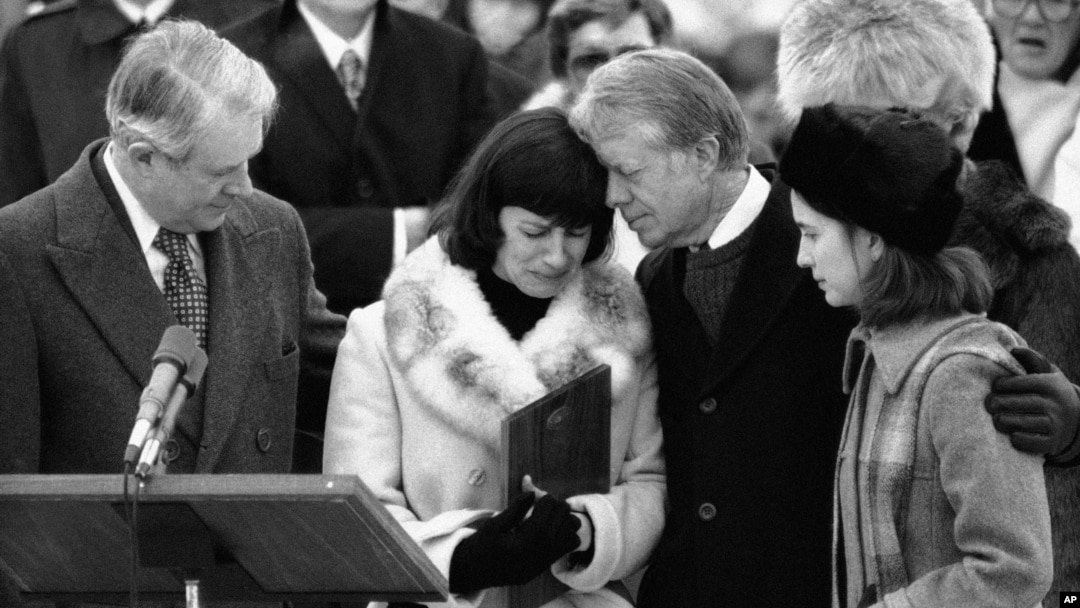
The Sordid History of British Manipulation of American Democracy Series
“On the morning of February 14, 1979, four Afghan terrorists stopped the Ambassador’s car and abducted him as he was traveling from his residence to the Embassy. By 8:50 a.m., the terrorist had taken Dubs to a second-floor room in the Kabul Hotel… Despite U.S. Embassy urgings to engage in “patient negotiations,” Afghan police stormed the room just after noon, and shots were fired. When U.S. Embassy officers were able to enter the room, they found the Ambassador dead from several gunshots.”
The Kidnapping and death of Adolph Dubs: Official Summary
After nearly 40 years the February 14, 1979 kidnapping and assassination of U.S. Ambassador Adolph Dubs remains an enigma. At the time, Cyrus Vance’s State Department and Zbigniew Brzezinski’s National Security Council were deeply divided over policy toward the Soviet Union, Iran, and Afghanistan. U.S. Ambassador to Afghanistan Adolph Dubs and Brzezinski held diametrically opposed objectives to the Marxist government of Nur Mohammed Taraki and Hafizullah Amin which, given the increasingly unstable political climate promoted by Brzezinski, undercut the ambassador and put him in great jeopardy.
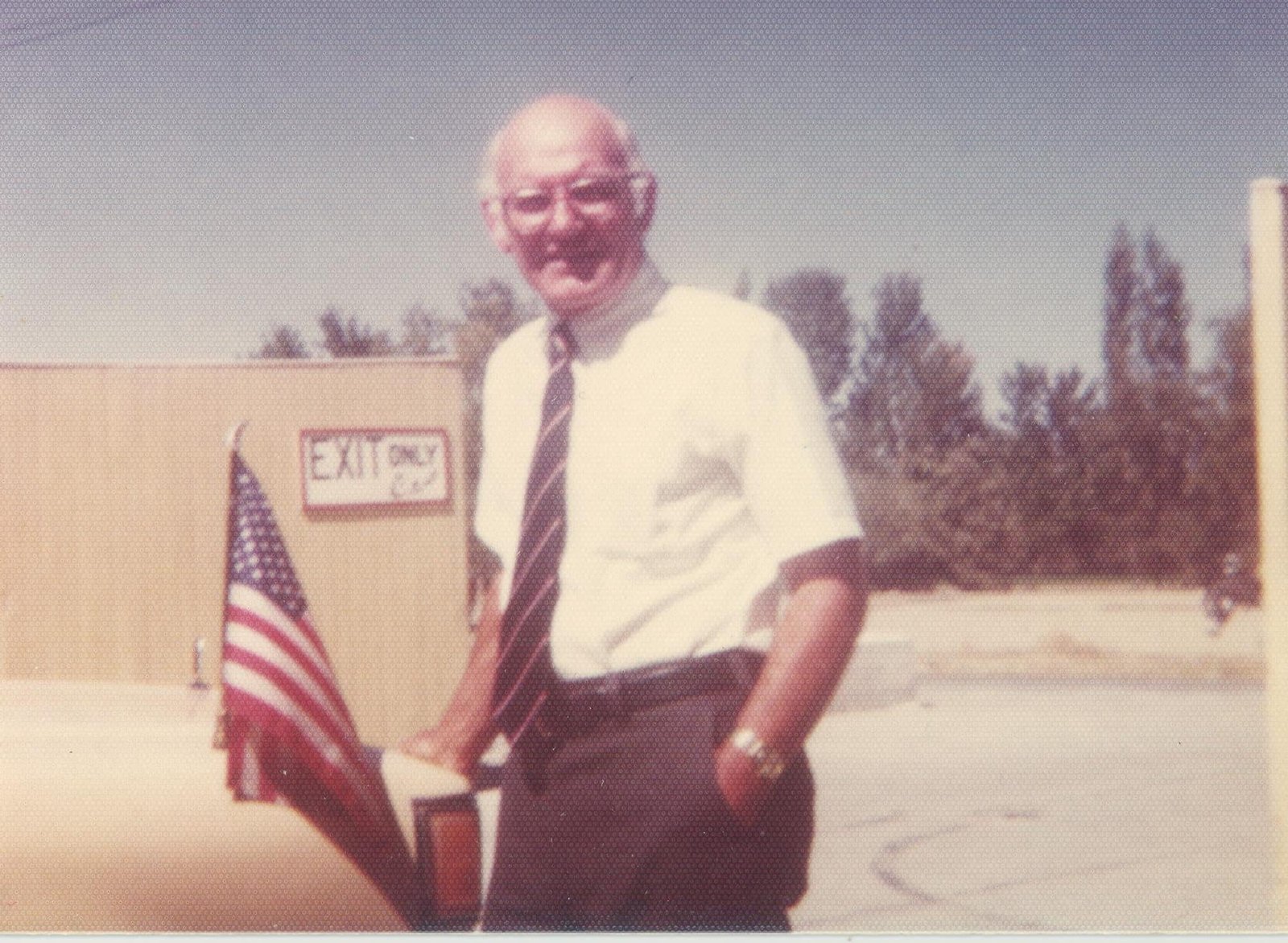
The Brzezinski/Vance divide came to a head at the Kabul Hotel that February 14; yet basic questions about the political maneuvering inside Washington that had caused the crisis for Dubs and who might have benefitted from his death have never been answered. Why did Adolph Dubs die at the Kabul Hotel, who killed him, and most glaring of all, who benefitted; or as the age-old term the Romans used for assigning guilt would ask, Cui Bono?
Early reports that the four kidnappers (at least one dressed in a police uniform) were members of a Chinese-trained Tajik-Maoist splinter group of the ruling Marxist People’s Democratic Party of Afghanistan (PDPA) known as the Setam-i Melli have never been confirmed but are strongly suspected. Neither are the names of the kidnappers known, nor whether it was they or the police who killed the ambassador as they stormed the room in violation (of what the US claimed) was an agreement to patiently negotiate the Ambassador’s release.
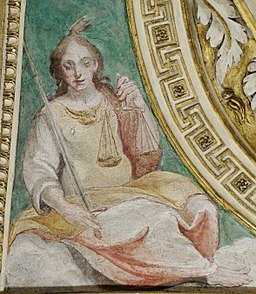
No one would ever take credit for the kidnapping, the bitterly divided Afghan regime would not allow the Americans access to the evidence, the crime scene was quickly sanitized and Zbigniew Brzezinski would immediately seize upon Hafizullah Amin’s refusal to accept responsibility and lack of a formal apology as proof of his pro-Soviet, anti-American bent. The kidnapping and assassination of Adolph Dubs would provide the spark to swing opinion in Washington toward Brzezinski’s desire for a more aggressive destabilization of Amin’s government that in turn would lead to exactly what Ambassador Adolph Dubs had died trying to prevent; a Soviet military occupation.
Two Separate events, each with different motives
The debate in Washington was over responsibility for the Ambassador’s death. It focused mainly on whether it was Afghans or Soviet advisors who had ordered the assault and not on the motives of the kidnappers or the actions of the embassy and the American ambassador himself. But if Brzezinski had been correct about it affirming Amin’s pro-Soviet credentials, why had the terrorists chosen an American to voice their protest and not a Soviet? Was Dubs’ plan to draw Amin closer to the U.S. working? Did the kidnappers want to damage Afghanistan’s relationship to the U.S. as Hafizullah Amin later claimed? Or was there another reason for leveraging the life of the American ambassador that neither the Afghans, the Soviets nor the Americans at the embassy were aware of?
As described in an interview conducted for Washingtonian Magazine in 2017 with Bruce Flatin, the political counselor dispatched by the U.S. embassy to the hotel that morning, the whole affair just didn’t add up. “Why not go to some house way out in the suburbs?, he wondered. Or a safe house in the country, or a cave up in the mountains, where authorities couldn’t so easily corner them? Why would Dubs’ captors, whoever they were, hole up at a busy, central hotel, in a room with street-facing windows, no escape route, and not even a phone for conducting negotiations?” And most of all, “Why was Dubs the pawn in what was an Afghan problem? It didn’t make sense.”
And the death of the ambassador that followed made even less sense to an Afghan government struggling to find itself; unless the kidnapping of Adolph Dubs didn’t start out as a kidnapping and his unfortunate death wasn’t the result of a botched rescue attempt, but was a deliberate assassination intended to trap Hafizullah Amin in the role of a Soviet puppet while at the same time removing Dubs as the last remaining obstacle to an ongoing plan.
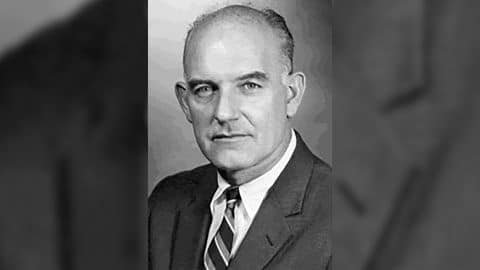
A False assumption: The “kidnapping” of Adolph Dubs
At a 1995 Nobel Symposium (pages 80-81) on the causes of the Afghan war – in the presence of former CIA director Admiral Stansfield Turner, the former Director of Soviet affairs at the National Security Council, General William Odom, and dozens of former high-level U.S., Soviet and European officials – the leading Russian authority on the Soviet war in Afghanistan, the military historian General Alexander Lyakhovsky delivered testimony on the Dubs’ killing which resolved part of the mystery and turned the existing narrative on its head.
“Then there was the episode where the American ambassador was killed. What were the circumstances? My account is based on my conversations with our secret services who were in charge of monitoring the crisis. One of the officers of the secret service told me that Dubs was seen in the company of those same people who kidnapped him later in the same hotel—in the same room—the day before they kidnapped him. And then later Dubs was in his car, with a travel case. He stopped his car when those same people who he saw the day before ordered him to stop as if they were known to him. You understand that we are talking about an ambassador with an armored car, bulletproof windows, doors that can be opened only from the inside, it has a siren that goes off in an emergency situation. Dubs did not use any of these emergency measures. He opened the door himself, and let the people who kidnapped him in the car. They came to the hotel and demanded that their extremist friends, who were in prison be released. And then Amin ordered the hotel to be stored. Both the Americans and us pleaded with Amin not to storm the hotel.”
Even today, twenty-seven years after the demise of the Soviet Union, most of the reports on the Dubs’ assassination rely on blind speculation or resurrected anti-Soviet Cold War assumptions. But Lyakhovsky’s account provides for new possibilities to explain oddities about the kidnapping that up to now couldn’t be considered.
Under pressure from Brzezinski and the NSC’s Thomas P. Thornton, Ambassador Dubs had been driven to meet outside the normal channels. Dubs was known by the embassy to have allowed the police to stop and search his car despite his diplomatic immunity – presumably as a safety check before meeting secretly with Amin. Selig Harrison spoke to Bruce Flatin about it in 1989, “[T]he ambassador had talked with Amin fourteen times, often in unannounced meetings, before Dubs was killed in February 1979. No record of the content of these exchanges has yet surfaced.”
And they never would. According to interviews conducted by Henry S. Bradsher for his 1985 book, Afghanistan and the Soviet Union, U.S. officials back in Washington denied published reports that “Dubs had frequent lengthy discussions with Amin,” while insisting that his reports “did not indicate he felt that he was making any progress toward convincing Afghan officials that they should resist Soviet influence.” But as Selig Harrison makes clear in his 1995 book with Diego Cordovez, Out of Afghanistan, Dubs was careful NOT to inform Washington of his progress with Amin out of fear that in the prevailing climate under which Brzezinski ruled, it would have cost him his credibility.
According to Lyakhovsky’s account, Dubs had gone to the Kabul Hotel on the 13th of February to meet with four men most likely aligned with the U.S. but opposed to the Taraki/Amin regime. Judging by their demands on the 14th, these men would have been supported by agencies friendly to the American mission, presumably in Pakistan, Iran or China. Soviet intelligence reports from the era indicate that in January 1979, Beijing had made an attempt to unite the “scattered groups of Afghan Maoists,” including “Setam i Melli and other splinter groups,” whose “program task” was the overthrow of the Afghan government. Recall that prior to his overthrow in April 1978, Prince Mohammed Daoud had ordered the Americans to stop meeting with the Afghan left but the Americans had not complied. Now, in one possible scenario, Dubs could have informed these pro-Maoist leftists that he did not want Amin overthrown and was ending their support by the embassy. An agreement was reached and a final payment of some sort was agreed to. The next day – suitcase in hand – he was stopped at a prearranged spot by the same four men he’d met with the day before but for some unknown reason the conditions had now changed. Whatever the deal that had been struck now involved the release of Tajik/Shiite Maoists imprisoned by the regime. The Kabul Hotel was the worst possible location for such a transaction and room 117 was indefensible. The decision to return to that room made absolutely no sense unless one of the four “kidnappers” was leading Dubs and the other three into a trap to which the busy Kabul Hotel was a key.
Dubs had put himself in the middle of a factional fight between anti-Pashtun Tajik/Shiite Maoists and pro-government Pashtun nationalists unaware that they were all being manipulated by an international criminal conspiracy working on behalf of Brzezinski’s agenda to use Hafizullah Amin and three of the “kidnappers” as patsies to lure the Soviets into their own Vietnam.
Why assault the room?
Based on published accounts it’s fairly certain that four men arrived at the hotel with Dubs but agreement on every other aspect of the so-called “kidnapping” and death ends there. According to the Afghan report of the events three were killed in the room with Dubs, a fourth kidnapper was wounded and a short time later died of his wounds. The Americans claimed that two kidnappers were killed in the room, a third was taken alive downstairs early on and was later seen being taken from the hotel “alive and relatively unharmed.”
The third account by Soviet KGB defector Vasiliy Mitrokhin maintains that of the four terrorists “Two died in the attack, one was taken into custody, and one escaped – it isn’t clear how,” suggesting that the fourth kidnapper had been helped.
Echoing Brzezinski’s longstanding practice of automatically claiming Soviet culpability before the facts were even known, the American report – leaked to the Washington Post by anonymous sources – openly claims a Soviet responsibility for Dubs’ death. Newsweek’s Ron Moreau cited unnamed “U.S. congressional sources” stating that “the Russians had wanted Dubs to die.” But Mitrokhin goes out of his way to insist that whatever influence KGB advisors might have had on the Afghan police that day, there was no “preconceived Soviet plot to kill Dubs.”
The Afghans produced four dead bodies for the Americans that evening and claimed they were the kidnappers. Bruce Flatin recognized the two that had died with Dubs and a third who’d been taken alive from the hotel, but the fourth was a man he had never seen before. “In Kabul,” Flatin told his Washingtonian interviewer, “it was easy to get a fourth body—right out of the jail. So there he was, the fill-in.” The autopsy revealed that Dubs had been killed by 4 shots to the head delivered at close range from a .22 caliber weapon. Not the kind of weapon, according to Flatin, used by Afghan soldiers or police, but the favorite type of weapon used by professional assassins.
No one has ever suggested the existence of a separate non-governmental agency in the death of Adolph Dubs, nor even hinted at it. The existence of Safari Club was only formally acknowledged to have existed by the one-time head of Saudi Arabian Intelligence Prince Turki Al-Faisal at a Georgetown University event in 2002. But the Safari Club’s no-compromise, anti-Communist agenda had been brought directly into the White House with Brzezinski’s National Security Council in 1977 and it had been active in Afghanistan long before February 14, 1979. If ever there was an opportunity for their 1,500-strong “black network” of CIA misfits, malcontents, assassins, and enforcers to act on Brzezinski’s agenda to lure the Soviets into their own Vietnam, it was in room 117 of the Kabul Hotel on February 14.
Hafizullah Amin later took full responsibility for Dubs’ death and absolved the Soviets, saying they had nothing at all to do with the decision-making. The case was supposed to be closed but it was clear that in addition to Dubs, the other target that day was Hafizullah Amin, and thanks to Zbigniew Brzezinski for the next ten months he’d be left to twist in the wind as bait for a Soviet invasion.
Copyright © 2018 Fitzgerald & Gould All rights reserved
The Sordid History of British Manipulation of American Democracy Series
- Part 1: MI6 intelligence has always been an anti-Soviet/Russian “Rumor Factory”
- Part 2: America’s “Soviet problem” is the old “Russia problem” that European Imperialists have been facing since Napoleon’s disastrous march on Moscow in 1812
- Part 3: How U.S. foreign policy came to be directed by a diabolical, London-backed, privately funded, neoconservative/right-wing alliance
- Part 4: How the Safari Club became the real CIA
- Part 5: Brzezinski‘s Safari Club “Friends” Did the Dirty Work Behind the Scenes
- Part 6: The Death of Adolph Dubs – Cui bono? ‘To whom is it a benefit?’
- Part 7: The Coup d’état
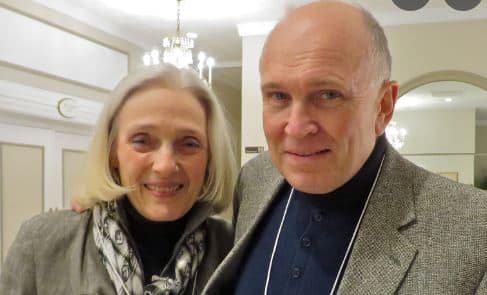
Paul Fitzgerald and Elizabeth Gould are authors of Invisible History: Afghanistan’s Untold Story, published by City Lights (2009), Crossing Zero The AfPak War at the Turning Point of American Empire, published by City Lights (2011). Their novel The Voice, was published in 2001. Their memoir, The Valediction Three Nights of Desmond (2021) and The Valediction Resurrection (2022) was published by TrineDay. For more information visit invisiblehistory , grailwerk and valediction.net
ATTENTION READERS
We See The World From All Sides and Want YOU To Be Fully InformedIn fact, intentional disinformation is a disgraceful scourge in media today. So to assuage any possible errant incorrect information posted herein, we strongly encourage you to seek corroboration from other non-VT sources before forming an educated opinion.
About VT - Policies & Disclosures - Comment Policy




Our relationship with the British, is self destructive. Though rotational leadership has it’s benefits, it also has it’s detractions. One of them is continuity of intelligence operations and the ability to ensure generational training from a perspective of solidarity within government. This makes us very susceptible to influence of those who have this continuity, and wield it with skill. Thank you for your work.
We need to retract, even more now than ever, we need to heal ourselves first. It is not a small job to fix our intelligence, and this admin is not in any way suited for it, though they are a fitting pain to bring our attention to the basic fact. And this has been going on for awhile,. Ocasio-Cortez, is born on the same day in the 260 and same decan,.. as Putin. Nate McMurray speaks fluent Korean and Mandarin.
I have always said that the British have been too involved in American history and democracy. I am glad we are finally exposing them. When we get to the part of how this affected the so-called American Revolution, I will jump up and down even if this knowledge comes a little bit too late.
Comments are closed.